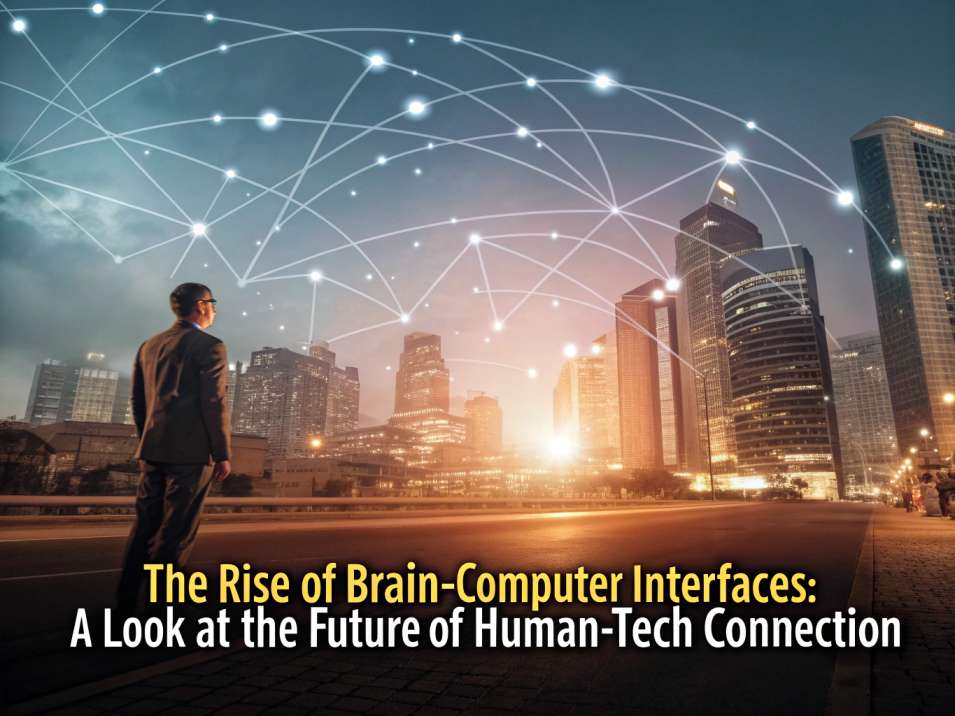For centuries, our interaction with technology has been mediated through physical interfaces—keyboards, mice, and touchscreens. But a new frontier is emerging, one that seeks to bridge the gap between human thought and the digital world directly. Brain-Computer Interfaces (BCIs), once the stuff of science fiction, are rapidly becoming a reality. These groundbreaking devices, also known as Brain-Machine Interfaces (BMIs), have the potential to fundamentally change how we communicate, interact with devices, and even treat medical conditions.
This guide will explore the fascinating world of BCIs, explaining how they work, their current applications, and the incredible possibilities they hold for our future.
1. How Do Brain-Computer Interfaces Work?
At their core, BCIs translate brain activity into commands for a computer or other external device. The process involves two main components: a method for capturing brain signals and a system for interpreting them.
- Capturing Brain Signals: There are two primary types of BCIs based on how they capture signals:
- Non-invasive BCIs: These are the most common and accessible. They measure brain activity from outside the skull, usually with devices like an EEG (electroencephalography) headset. While they are safe and easy to use, they offer lower signal resolution.
- Invasive BCIs: These devices are surgically implanted directly into the brain. They provide a much higher resolution of brain signals, which allows for more precise control. Companies like Neuralink are focused on developing and commercializing invasive BCIs for various applications.
- Interpreting the Signals: Once brain signals are captured, they are sent to a computer. Here, a machine learning algorithm analyzes the patterns of brain activity and translates them into a specific command. For example, a user might imagine moving their hand, and the BCI interprets the corresponding brain activity to move a robotic arm.
2. Current Applications: Beyond Science Fiction
While BCIs are still a nascent technology, they are already making a life-changing impact, particularly in the medical field.
- Restoring Mobility: BCIs are giving individuals with paralysis the ability to control prosthetic limbs or exoskeletons with their minds. This technology has enabled people to regain a sense of independence, allowing them to perform everyday tasks like grasping objects or moving a cursor on a screen.
- Communication: For individuals who have lost the ability to speak, BCIs offer a new way to communicate. By translating brain signals related to language or intention, these interfaces can enable users to type on a screen or select phrases.
- Treating Neurological Disorders: Researchers are exploring how BCIs can be used to treat conditions like Parkinson’s disease, epilepsy, and even depression. By monitoring and modulating brain activity, these devices could help manage symptoms and improve the quality of life for patients.
3. The Future of BCIs: A Connected World
The potential for Brain-Computer Interfaces extends far beyond the medical field. In the coming decades, BCIs could become a new form of human-computer interaction, blending our physical and digital worlds in unprecedented ways.
- Gaming and Entertainment: Imagine playing a video game where your character responds to your thoughts, or controlling a virtual reality environment with your mind. BCIs could offer a new level of immersion that a traditional controller can’t match.
- Productivity and Learning: BCIs could allow us to control computers and other devices without a keyboard or mouse, making our interactions faster and more intuitive. In education, these devices could help track a student’s focus and attention, providing real-time feedback to improve learning.
- Communication and Social Interaction: In the future, BCIs might allow for a form of direct mental communication, enabling individuals to share thoughts and ideas more directly. This could revolutionize social media, communication, and even human connection.
Conclusion: A New Era of Interaction
The journey of Brain-Computer Interfaces is just beginning. While significant challenges remain, including ethical considerations and the need for more user-friendly designs, the potential is undeniable. BCIs promise a future where technology is no longer a separate tool but a natural extension of our own minds. This new era of human-tech connection is not about replacing our senses but about amplifying our capabilities, opening up a world of possibilities that we are only just beginning to imagine.
